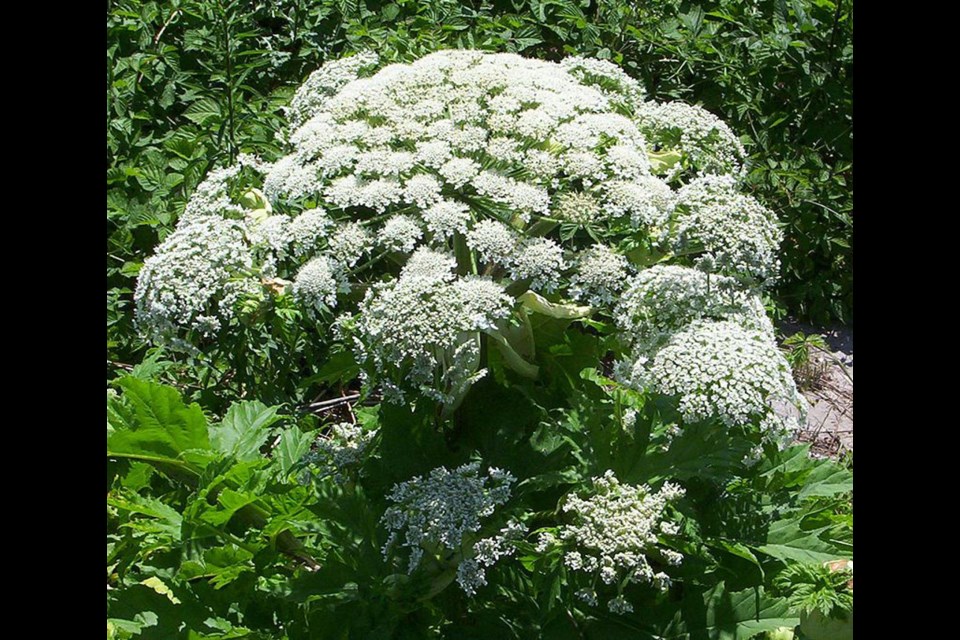There is currently no cause for concern regarding giant hogweed in the Sault and area, officials say.
A SooToday reader contacted us about sighting giant hogweed on Whitefish Island, giant hogweed being classified as a potentially dangerous Invasive Species.
“The closest known report of giant hogweed is in Elliot Lake. Cow parsnip is a commonly reported look-a-like and is found throughout Sault Ste. Marie and on Whitefish Island,” stated Lauren Bell, Invasive Species Centre project manager, in an email to SooToday.
Giant hogweed is an invasive perennial herb, native to the Caucasus Mountains in southwest Asia, which has spread to southern and central Ontario (as well as Europe).
Large concentrations of giant hogweed not only outcompete native plants, but the weed can be hazardous to humans.
“Giant hogweed sap can cause a condition called phytophotodermatitis, which makes skin extremely sensitive to sunlight, and can result in severe burns and blisters,” states the Invasive Species Centre.
A wealth of information regarding giant hogweed, including control measures, preventing the spread and tracking the spread of giant hogweed, as well as information on how to spot the difference between giant hogweed and look-a-like species, can be found in online literature provided by the Sault-based Invasive Species Centre.
Bell told us “always be cautious around suspected giant hogweed, as even some look-a-like species, including cow parsnip, are also phototoxic.”
"Cow parsnip, while still noxious, is native to North America and therefore not an invasive species. Although a nuisance, it is part of our natural ecosystem," Bell said.
Members of the public, if exposed to giant hogweed sap (or sap from look-a-like species), should wash skin thoroughly with soap and water, avoid further exposure of the affected skin to sunlight, seek medical help if photodermatitis occurs, flush the eye(s) with water and urgently seek medical evaluation and treatment.
“If anyone in the public thinks they have seen giant hogweed, they should take a picture and report it to EDDMapS either through the mobile app or at www.eddmaps.org/ontario Due to the potentially dangerous nature of giant hogweed we also recommend calling the Invading Species Hotline at 1-800-563-7711” Bell wrote.
For an online map of the spread of giant hogweed, click here
